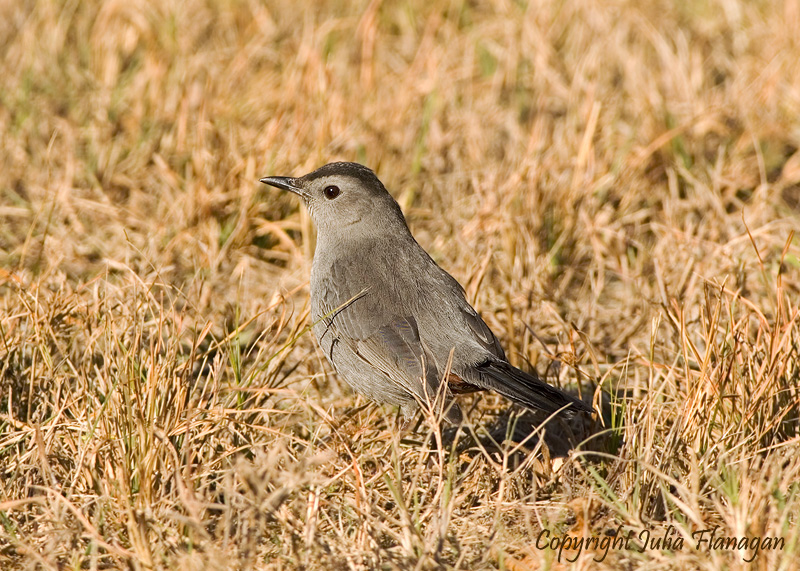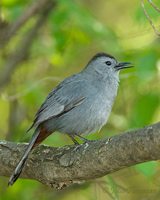
|
Catbird Like its relative the mockingbird, the Gray Catbird mimics other birds' songs (as well as those of tree frogs and the sounds of machinery), but the Catbird's repeats the copied song only once. Also, the catbird is not as easily located or seen when singing, because it usually prefers to stay hidden in trees or thick vegetation rather than "shout from the rooftops" like the mockingbird. The Gray Catbird is colored a medium gray over most of its body; the tail, legs, eyes, bill and the top of its head are darker. It is a medium-sized bird, 8 to 9 inches long, slightly smaller than most robins or mockingbirds. Adults have a rust-colored patch under the tail in back; the juvenile birds lack this color and have pale streaks on their breasts and bellies. The Catbird is fairly common in North America east of the Rocky Mountains, from southern Canada to the east coasts of Mexico and Central America and on the larger Caribbean islands such as Cuba and Jamaica. Nevertheless, because its preferred habitat is dense growth found along forest edges, overgrown fences, streams and roadsides, it is not easily noticed. It avoids open spaces, flying low over the bushes and undergrowth, although in the southern coastal areas in winter many are killed by cars as they fly across roads. Another occasion when catbirds will come out into view is when they drive predators or intruders away from their nests or territory, often making the mewing sound that gives the catbird its name. Catbirds will even defend a territory in winter when they have no nest or young to protect! They forage for insects and other arthropods on the ground and in dense vegetation, and also eat tree fruits and berries. Among their favorites are fruits of holly, dogwood, serviceberry, and cherry trees, as well as raspberries, elderberries, blackberries and grapes. They are one of the species that will eat poison ivy berries and so may be responsible for the spread of the weed. Their light blue eggs are laid in a cup-like nest located close to the ground in a bush or tree, and the young are fed by both birds of a pair. Outside of the summer breeding season Gray Catbirds may come into closer association with people, migrating to live in city parks and suburbs, as well as forests, near the Atlantic and Gulf Coasts and in Central America.. They will come to bird feeders to eat raisins, currents and peanut butter. |
Home | Upcoming Events | About Us | Resource Issues | News | Local Contacts Maps | Photos | Publications | Youth Education | FAQ's | Links | Membership |






